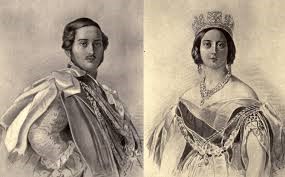The Importance of Positive Influences
By Mallory Slocum
January 4, 2016I love history. It is one of my many interests. One of my favorite areas to study is the British monarchy, especially monarchs of the late 19th century and the early 20th century. The reason why I am only including the early 20th century is that Great Britain has had the same monarch since 1952. I have read up on the Kings and Queens of England from Victoria to Elizabeth II. Each one faced their share of difficulties, especially the monarchs of the 21st century. We have something to learn from each of these monarchs. I would like to take the opportunity, over the next several blogs to look at some of these notable monarchs.
Even those who cannot name very many British monarchs would’ve heard of Queen Victoria. At the time of her birth, the House of Hanover was in dire straits to keep the throne. When Princess Charlotte died during childbirth, William IV and his brothers quickly married and attempted to produce an heir. Prince Edward, Duke of Kent, was successful. However, he died shortly after Victoria’s birth.
Victoria was protected by her mother and primed for the throne. She sought to protect her from any unexpected accidents (she was not allowed to ascend or descend the stairs unaccompanied) or outside influences. She always considered her childhood home to feel more like a prison. It was until her ascension to the throne, in 1837, that she felt any sense of freedom.
Since she had little contact with other people, like her uncle King William IV and other members of her father’s family, she had very little knowledge of politics or the state the kingdom was in. In her early reign, she was heavily influenced by Lord Melbourne, the Prime Minister at the time, and many have said that he was satisfy his own agenda. It was not until her marriage that things started to change.
Victoria married Prince Albert, her first cousin in 1840. He became more than just her life companion. He also became her political adviser, replacing Lord Melbourne. His guidance led her to make a lot of great decisions. He also helped to mend the severely strained relationship between Victoria and her mother.
Victoria’s role in British history was a profound one. She reminds of Esther. She became queen because of her beauty but she became more than just “eye candy.” Like Victoria, she grew into her role. Esther loves and respects Mordecai, her uncle, and she listened to everything he said. He also gave her the encouragement to speak to the king on important matters. He foiled an assassination plan against the king, through Esther’s mediation.
If you are familiar with this book, you know that Haman becomes the villain. He wanted to punish the Jews because Mordecai refused to bow down to him, as the King had ordered. Haman made it his mission to destroy the Jews. Mordecai reached out to Esther to put a stop to this terrible event that was about to unfold. She did not know what to do because she could only see the King when she was summoned for and she had not been called for thirty days. Mordecai encouraged her. He said, “Even if you now remain silent, relief and deliverance will come to the Jews from another source; but you and your father’s house will perish. Who knows—perhaps it was for a time like this that you became queen?” (Esther 4:14, NAB) This gave her the confidence to go and see the King and he found favor with her and this led to Haman’s downfall and saved their people.
God puts other people in our lives for a reason. We have parents, friends, colleagues, coworkers and they all have something to offer to us. We “should be quick to listen, slow to speak, and slow to anger.” (James 1:19, NIV) God places someone in our life to help give us direction. For Queen Victoria, it was her husband. For Esther, it was Mordecai.
Think of someone who has done this in your life. Be sure to thank them for this priceless wisdom.


